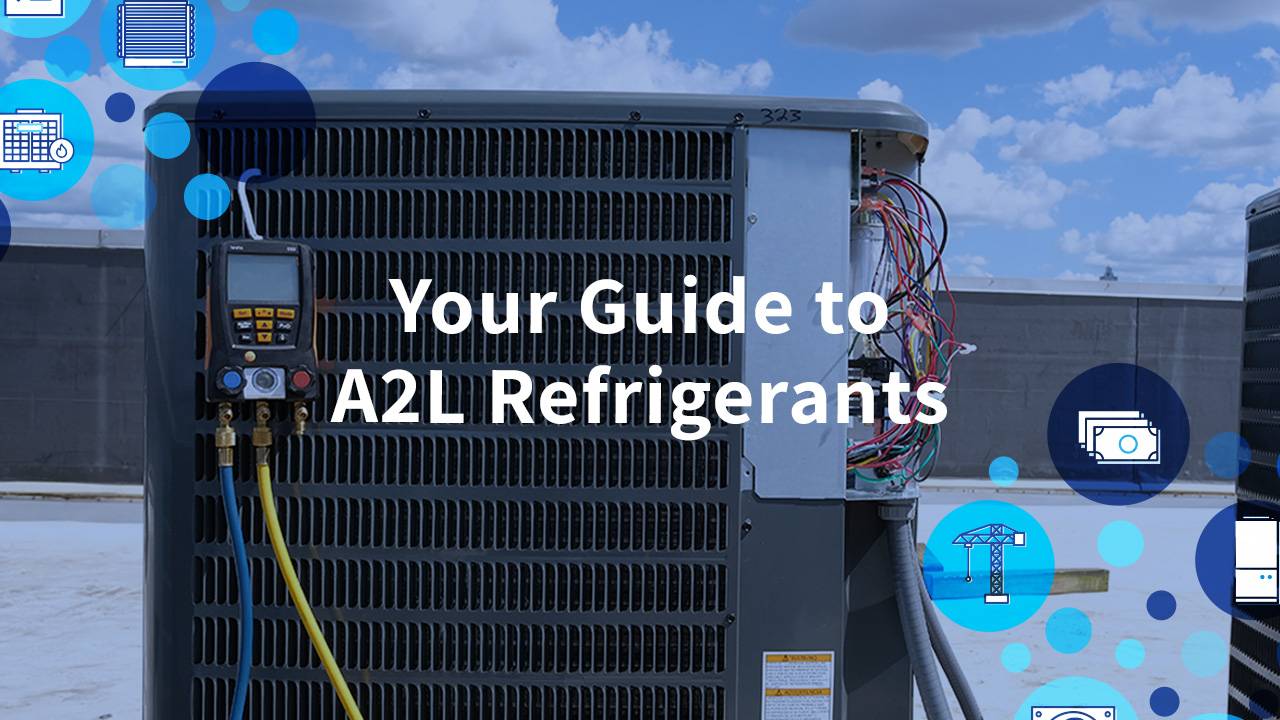Refrigerants are a dynamic component in the HVAC industry. They are constantly evolving and being pushed towards higher sustainability standards to meet government regulations and consumer expectations. Refrigerants are essential for HVAC systems. However, the industry is facing the challenge to meet high standards and address pressing environmental concerns without compromising safety. The industry has landed on A2L refrigerants.
Refrigerant Classification
Refrigerants are classified by toxicity and flammability. The toxicity scale ranges from A to B where the ‘A’ group is the lowest toxicity and ‘B’ is the highest toxicity. The flammability scale includes 1, 2L, 2, and 3 where flammability group ‘1’ does not have flame propagation and the ‘3’ group is the highest flammability.
For example, if you take the A2L group, the ‘A’ represents the lowest toxicity class, and ‘2L’ represents lower flammability. This means A2L refrigerants have the same toxicity level as A2 and A3 refrigerants but are less flammable. The refrigerants within the A2L classification retain a low global warming potential (GWP) and include common refrigerants such as R-454B and R-32. A2L refrigerants will replace those with a higher GWP, such as R-410A, as environmental sustainability is an increasing priority.
A2L Sustainability
According to Engineered Systems, sustainability in HVAC systems is measured by the following:
- The energy efficiency of the air conditioner cycle
- The total cost impact of both refrigerant and equipment
- Safety classification considerations such as flammability and toxicity
- Environmental considerations such as ozone-depleting potential (ODP) and global warming potential (GWP)
- Design and reliability considerations, such as chemical compatibility and stability
- Lifecycle considerations such as recycling and reclaiming of used refrigerant
While the industry strives to excel in each of these categories, there is not an ideal refrigerant due to its chemical makeup. A tradeoff must occur between the number of fluorine atoms and hydrogen atoms. The lower the number of fluorine atoms, the lower global warming potential. However, these contain more hydrogen atoms which are more flammable.
Despite the chemistry limitations of refrigerants, Daikin stated that “transitioning to low-GWP refrigerants doesn’t mean compromising on safety. The leading lower-GWP candidates fall into relatively new lower flammability classification of A2L.” For an A2L refrigerant to burn, there would need to be multiple failures. According to AHRI research, there would need to be a significant refrigerant leak, that leak would have to reach an LFL concentration above 10%, and there would need to be an open flame or high energy source to ignite an A2L refrigerant.
How does this impact contactors?
Contractors need to be educated on how to handle A2L refrigerants. Popular refrigerants that retain a much higher GWP such as R-410A, R-22, and R-407C are classified as A1 refrigerants, which means they fall into the non-flammability class. A2L refrigerants are slightly more flammable which poses an increased risk and calls for additional safety measures. Understanding the best practices and safety procedures for A2L refrigerants is essential to avoid catastrophe.
Chris Czarnecki, government relations representative at ACCA, told ACHR News that the HVAC industry is facing a problem where contractors who take shortcuts underbid the contractors who adhere to rules and regulations. He stated that “if shortcuts are taken with flammable products, the consequences will potentially be deadly. Property and lives can be lost without proper training and safety precautions.” Education and training around these refrigerants are immensely valuable. Contractors can find training from ACCA here.
In addition to education on safety measures, there are other aspects technicians should be aware of when dealing with A2Ls. For example, A2Ls are only going to be in new equipment, which means they cannot be retrofit. As with any refrigerant, it’s especially important to correctly perform recovery, evacuation, and nitrogen purging before any brazing with A2Ls. The Refrigeration Service Engineers Society (RSES) provides a low GWP refrigerant manual on safety, installation, codes, standards, and more on A2Ls here.
[forminator_poll id=”13367″]












